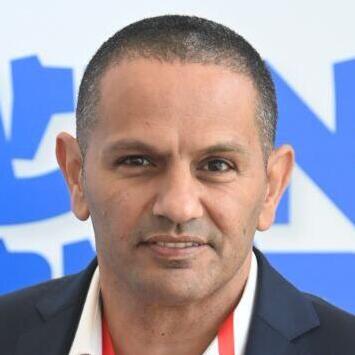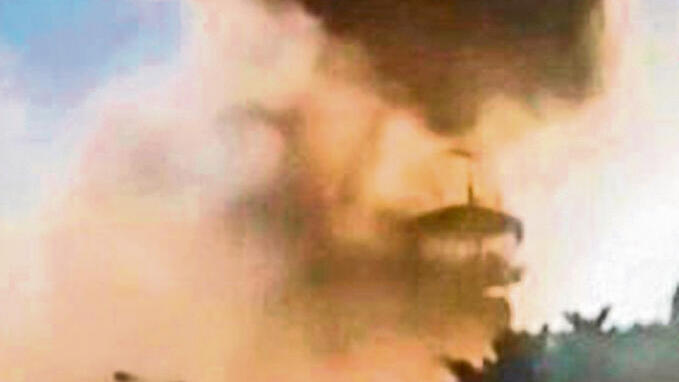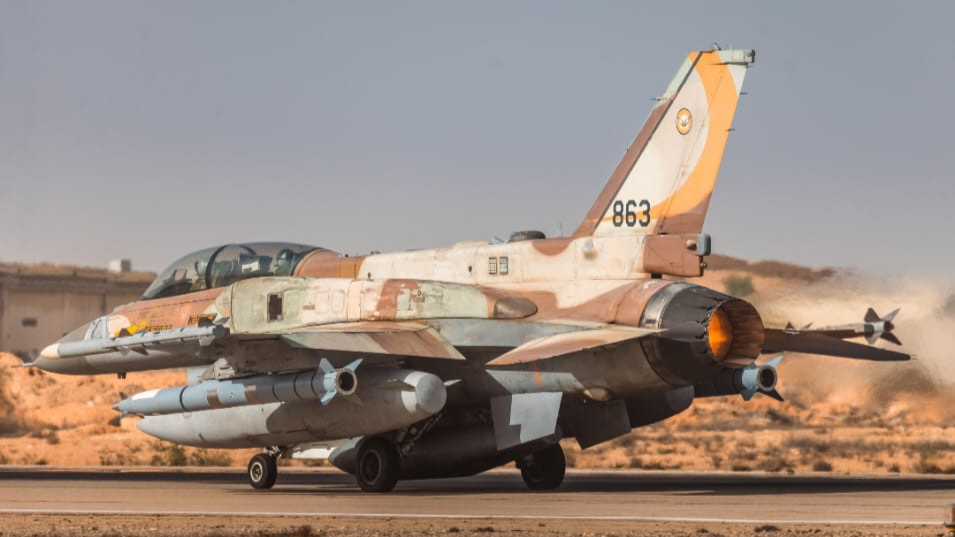After being postponed twice, the IDF’s operation against the Houthis was launched on Thursday. It marked Israel's most extensive and significant operation since its responses to missile fire from Yemen began.
However, it hasn't prevented subsequent incidents where the Houthis have startled hundreds of thousands of Israelis, forcing them into shelters in the dead of night with missile and drone launches. Against an extremist organization located 2,000 kilometers (1,243 miles) away, deterrence isn't achieved by merely disabling an airport.
Damages in Yemen after Israeli strike
Twenty-five Israeli Air Force jets took part in strikes on targets in the Yemeni capital Sanaa and several other key locations. A significant blow was dealt to the airport, where the control tower, runways and entry and exit halls were all attacked.
The power station in Haziz, south of Sanaa, was also targeted. In the Hodeidah area, which has already seen what Israel is capable of, the port, the Ras Khatib power station and the Ras Isa oil terminal came under fire.
This was undeniably a more aggressive and ambitious strike, but the campaign in the region is far from over. Israel will need to demonstrate the ability to carry out continuous attacks with increasing intensity as the Houthis have already declared their intent to keep firing.
They launched another missile, triggering alarms in the middle of the night and there's no reason to believe they won’t escalate things further. This pattern was evident after Israel's previous strike a week ago: not only did the Houthis continue but their fire recently caused destruction at a school in Ramat Ef’al and in Jaffa.
To combine quantity and quality in its responses, Israel requires high-quality intelligence on additional targets, enhanced operational capabilities and the establishment of an effective international coalition to share the burden.
Thursday’s strikes aimed to hit the Houthis' limited critical hubs, especially targeting Yemen's already fragile economy. These few connections between the Houthis and the rest of the world are of international interest, as removing this persistent and exhausting threat benefits everyone.
Israel's strategy includes enforcing a naval and aerial blockade on Yemen to sever the Iranian smuggling route feeding it. The Houthis still have missile production capabilities, though they aren't industrial and are far below Israel's standards.
Their drone capabilities are also noteworthy and the public should understand that they can sustain daily attacks — a prospect experts believe is likely.
The IDF views the operation as a live demonstration of the Israeli Air Force's potential in long-distance missions, once considered only hypothetical. "We are capable of much more," said Israeli Air Force Commander Maj. Gen. Tomer Bar.
His statement leaves little room for interpretation. Likewise, Iran is undoubtedly closely monitoring the experience Israel gains from these strikes and considering where it might apply them in the future.
At the same time, senior Israeli officials are pointing to the Houthi leadership as an effective target. Defense Minister Israel Katz explicitly said, "We will hunt down all Houthi leaders — none will escape Israel's long reach."
Get the Ynetnews app on your smartphone: Google Play: https://bit.ly/4eJ37pE | Apple App Store: https://bit.ly/3ZL7iNv
While the objective Katz refers to is a consensus in the West (the U.S. and UK would gladly see the threat eliminated), a minor issue remains: operational capabilities. It took considerable time to locate Hamas's leadership in Gaza, just two hours from the minister’s office in Tel Aviv.
On the northern border, intelligence has been systematically gathered to target Hezbollah's leadership when necessary. Eliminating skilled terrorist leaders hiding in a distant, chaotic country is far from a walk in the park.







